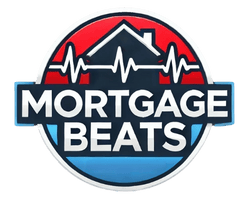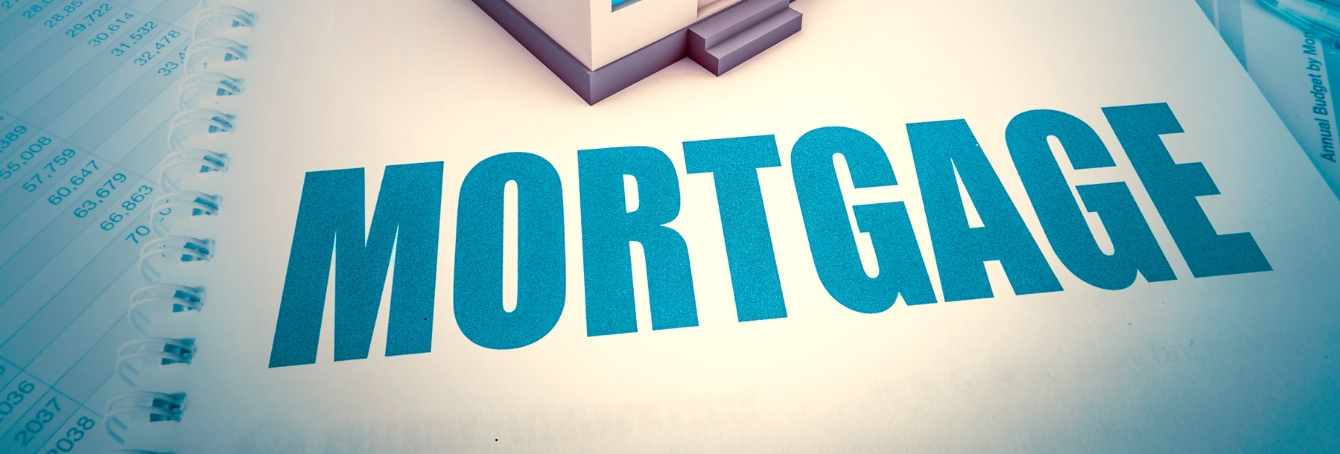What Exactly is a Second Mortgage?
A second mortgage represents a secured loan that homeowners obtain while maintaining their original primary mortgage, using their property’s equity as collateral. These loans typically come in two forms: home equity loans providing lump-sum financing with fixed rates, and home equity lines of credit (HELOCs) offering flexible access to funds with variable rates. Both options allow homeowners to tap into their property’s appreciated value or paid-down principal for major expenses like home improvements, debt consolidation, or education costs. Unlike refinancing, a second mortgage preserves the original loan terms while adding another payment obligation secured by the same property.
The subordinate position of these loans in the repayment hierarchy creates greater risk for lenders compared to primary mortgages. In foreclosure situations, the first mortgage gets paid off completely before any funds go toward the second mortgage. This increased risk directly influences the interest rates lenders charge, typically making second mortgage rates higher than those for primary mortgages. However, these rates still generally prove more favorable than unsecured borrowing options like credit cards or personal loans due to the collateral involved.
At NorCal Real Estate & Financial Service, we help homeowners evaluate whether a second mortgage makes financial sense for their specific situation. Our advisors explain the nuances of different second mortgage products and how they compare to alternatives like cash-out refinancing. Many clients find these loans provide ideal solutions when they need substantial funds but want to maintain their advantageous primary mortgage terms.
Primary Factors That Determine Second Mortgage Rates
Several key elements influence the interest rates lenders offer on second mortgages, with creditworthiness leading the list. Borrowers with excellent credit scores and stable income histories typically qualify for rates several percentage points lower than those with marginal credit. Lenders perceive these applicants as lower risks despite the second position lien, resulting in more favorable pricing. The relationship between credit quality and rate pricing follows a steeper curve for second mortgages compared to primary loans due to the increased lender risk.
Property equity plays an equally crucial role in second mortgage pricing. Loans representing smaller percentages of available equity (lower loan-to-value ratios) generally secure better rates. Most lenders cap combined loan-to-value ratios at 80-90% for second mortgages, meaning the total of both mortgages shouldn’t exceed this percentage of the home’s appraised value. Properties in appreciating markets sometimes qualify for more favorable terms as lenders anticipate continued value growth that further secures their position.
We analyze all these factors for clients at NorCal Real Estate & Financial Service when shopping second mortgage options. Our relationships with multiple lenders allow us to compare how different institutions weigh these variables, helping borrowers secure the most competitive rates available. This comprehensive evaluation often reveals opportunities to structure loans in ways that minimize interest costs over the borrowing period.
How Credit Scores Impact Your Rate
Credit scores exert tremendous influence on second mortgage rates, often more dramatically than with primary mortgages. Where primary mortgage rates might vary by 1-2% across the credit spectrum, second mortgage rates can span a 4-5% range from excellent to poor credit. Most lenders tier their second mortgage products into credit bands, with each 20-point score improvement potentially qualifying borrowers for better rate categories. Those with scores below 620 may find limited options at substantially higher rates, while borrowers above 740 typically access the most favorable terms.
The specific credit factors that most affect second mortgage rates include payment history, credit utilization ratios, and recent credit inquiries. Late mortgage payments on the primary loan raise particular red flags for second mortgage lenders, as they indicate potential risk in handling multiple housing payments. High balances on revolving credit accounts also negatively impact pricing, as they suggest greater overall debt burden. Some lenders specialize in second mortgages for borrowers with credit challenges, but these niche products come with significant rate premiums.
Our credit specialists at NorCal Real Estate & Financial Service help clients understand and improve their credit profiles before applying for second mortgages. We review credit reports in detail, identifying the most impactful changes borrowers can make to qualify for better rates. Many clients achieve substantial savings by following our targeted credit improvement strategies before securing their second mortgages.
Loan-to-Value Ratio Considerations
The loan-to-value (LTV) ratio represents one of the most powerful levers affecting second mortgage rates, measuring the relationship between loan amounts and property value. Lower LTV ratios signal less risk to lenders and consequently earn better interest rates. Most lenders offer their most competitive second mortgage rates for combined LTVs (including both mortgages) below 70%, with gradual rate increases as this ratio climbs toward common maximums of 85-90%. Each percentage point decrease in LTV can potentially improve the offered rate, creating opportunities for strategic borrowing.
Property type and location also interact with LTV considerations in rate determination. Single-family primary residences in stable markets typically qualify for the best LTV terms, while vacation properties or homes in declining markets may face stricter LTV limits and higher rates. Some lenders offer special programs for certain professions or relationship customers that allow slightly higher LTVs without drastic rate increases, though these exceptions are becoming less common in tighter credit environments.
We help clients at NorCal Real Estate & Financial Service evaluate how different loan amounts affect both rates and overall borrowing costs. Our modeling tools demonstrate how borrowing slightly less could qualify for a better rate tier, sometimes resulting in lower overall costs despite accessing fewer funds. This analytical approach helps homeowners make informed decisions about how much equity to tap while optimizing their interest expenses.
Current Market Conditions and Rate Trends
Second mortgage rates fluctuate with broader financial market conditions, though they maintain a consistent spread above primary mortgage rates due to their subordinate position. When the Federal Reserve adjusts benchmark rates, second mortgage products typically respond more dramatically than primary mortgages, especially for HELOCs with variable rates. Economic indicators like employment figures, inflation data, and housing market trends all influence how lenders price their second mortgage products over time.
The competitive landscape among lenders also impacts available rates significantly. Traditional banks, credit unions, and online lenders each have different appetites for second mortgage business at various times, creating opportunities for rate shoppers. Some institutions offer promotional rates on HELOCs to attract new customers, while others provide discounts for existing customers with multiple account relationships. These variations make comprehensive rate shopping particularly valuable for second mortgage seekers.
Our team at NorCal Real Estate & Financial Service monitors these market dynamics continuously to help clients time their second mortgage applications advantageously. We track which lenders are currently offering the most competitive terms for different borrower profiles and property types. This market intelligence allows us to guide clients toward optimal borrowing opportunities they might miss shopping on their own.
Fixed vs. Variable Rate Second Mortgages
The choice between fixed and variable rate structures represents a critical decision point for second mortgage borrowers, with each option presenting distinct advantages. Fixed-rate home equity loans provide payment stability, making them ideal for borrowers who need predictable costs over the loan term. These loans typically carry slightly higher initial rates than variable options but protect against future rate increases, proving particularly valuable in rising rate environments or for longer-term financing needs.
Variable-rate HELOCs offer lower introductory rates and flexible access to funds, but introduce uncertainty as payments fluctuate with market conditions. Most HELOCs feature a 10-year draw period followed by a 20-year repayment period, with rates typically tied to the Prime Rate plus a margin. Borrowers comfortable with some risk may benefit from initially lower costs, especially if they plan to pay down balances quickly or anticipate increased future income to handle potential payment increases.
We help clients at NorCal Real Estate & Financial Service evaluate which rate structure aligns best with their financial situation and risk tolerance. Our advisors compare total projected costs under various rate scenarios to illuminate the long-term implications of each option. Many clients find this analysis invaluable when choosing between the security of fixed payments and the initial savings of variable rates.
Relationship Between Loan Terms and Interest Rates
Second mortgage terms significantly influence offered interest rates, with shorter durations typically commanding lower rates. Home equity loans with 5-10 year terms often price 0.5-1.5% below comparable 15-20 year options, as the shorter repayment period reduces lender risk. However, the higher monthly payments required by shorter terms may offset the interest savings for some borrowers, making term selection a crucial balancing act between affordability and total cost.
HELOCs introduce additional term considerations through their draw and repayment period structures. Loans with longer draw periods (time during which funds can be accessed) often carry slightly higher margins over the index rate. Some lenders offer interest-only payment options during the draw period, which can reduce initial payments but increase long-term costs if borrowers don’t pay down principal. Understanding these trade-offs helps borrowers select terms that align with their cash flow needs and repayment plans.
Our financial modeling at NorCal Real Estate & Financial Service helps clients visualize how different term options affect both monthly obligations and total interest costs. We present multiple scenarios showing how accelerated payments or early payoff could further reduce costs, empowering borrowers to make term decisions that best serve their financial goals.
Strategies to Secure Lower Second Mortgage Rates
Proactive credit improvement stands as the most effective strategy for securing better second mortgage rates. Borrowers should review their credit reports 6-12 months before applying to correct errors and reduce credit utilization ratios. Paying down revolving debt below 30% of limits (and ideally below 10%) can produce significant score improvements. Avoiding new credit applications in the months before seeking a second mortgage also helps maximize scores by limiting hard inquiries.
Shopping multiple lenders remains equally crucial, as second mortgage pricing varies more widely between institutions than primary mortgage rates. Local credit unions often offer competitive HELOC pricing to members, while some online lenders specialize in low-rate home equity loans. Relationship discounts may be available for existing banking customers or those willing to move additional accounts. Timing applications when lenders are actively seeking second mortgage business can also yield better terms.
We employ all these strategies and more for clients at NorCal Real Estate & Financial Service. Our established lender relationships often provide access to special rate promotions not advertised to the general public. We also know which lenders offer the most favorable terms for specific borrower profiles, from high-equity situations to self-employed applicants. This insider knowledge frequently secures rates that beat what borrowers can find through independent shopping.
Refinancing Options for Existing Second Mortgages
Homeowners with existing second mortgages can potentially save substantial money by refinancing when market conditions improve or their financial situation strengthens. Rate-and-term refinancing allows borrowers to secure lower interest rates or more favorable repayment terms, while cash-out refinancing enables accessing additional equity at potentially better rates than new second mortgages. The optimal strategy depends on current rates, equity positions, and how the existing second mortgage is structured.
Timing considerations play a crucial role in second mortgage refinancing decisions. HELOCs with rising variable rates may warrant refinancing into fixed-rate products when interest rate hikes are anticipated. Conversely, borrowers with high-rate fixed second mortgages might benefit from refinancing when overall rates drop significantly. Closing costs and potential prepayment penalties must be factored into these decisions to ensure true savings will be realized.
We help clients at NorCal Real Estate & Financial Service analyze when second mortgage refinancing makes financial sense. Our break-even calculations compare refinancing costs against projected interest savings to identify optimal timing. Many clients have significantly reduced their borrowing costs through our strategic refinancing recommendations as their equity positions or credit profiles improved.
Professional Guidance for Optimal Second Mortgage Decisions
Navigating second mortgage options benefits tremendously from professional advice due to the products’ complexity and varying lender terms. Experienced mortgage professionals understand how different lenders evaluate second mortgage applications and can match borrowers with institutions most likely to offer favorable terms. They help structure applications to highlight strengths and mitigate weaknesses, potentially securing better rates than borrowers could obtain independently.
Mortgage advisors also provide valuable perspective on how second mortgages fit into broader financial plans. They can compare second mortgage costs against alternatives like cash-out refinancing or unsecured lending options, ensuring clients choose the most cost-effective solution for their needs. This holistic view proves particularly important when using home equity for debt consolidation or investments where the overall financial impact extends beyond just loan terms.
At NorCal Real Estate & Financial Service, we take pride in providing comprehensive second mortgage guidance that considers both immediate needs and long-term financial health. Our consultants combine market expertise with personalized attention to each client’s situation. From initial rate shopping through closing and beyond, we strive to make the second mortgage process straightforward and advantageous for homeowners.
Conclusion
Second mortgage rates reflect a complex interplay of borrower qualifications, property factors, and market conditions, typically ranging several percentage points higher than primary mortgage rates. Understanding the key influences on these rates—from credit scores to loan-to-value ratios—empowers homeowners to make informed borrowing decisions. Strategic approaches like credit optimization, lender comparison, and professional guidance can help secure the most favorable terms available.
The mortgage professionals at NorCal Real Estate & Financial Service specialize in helping homeowners navigate second mortgage options successfully. Our comprehensive approach evaluates all available products and strategies to identify solutions that minimize borrowing costs while meeting financial needs. We’ve helped countless clients access their home equity advantageously through well-structured second mortgages.
For homeowners considering a second mortgage, we invite you to contact our team for a consultation. Whether you need funds for home improvements, debt consolidation, or other major expenses, our expertise can help you secure financing that aligns with both your immediate needs and long-term financial well-being. Let us show you how our client-focused approach makes accessing home equity simpler and more rewarding.
Ready To Get The Best Financial Advise, Email us at: Chris@mortgagebeats.com



